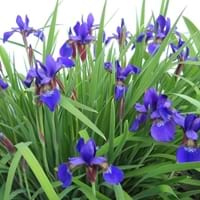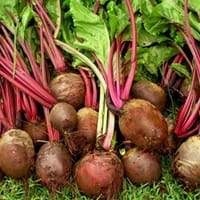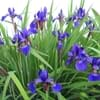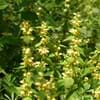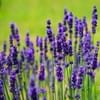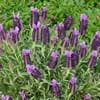Life Span
Perennial
Biennial
Origin
Eastern Europe, Russia, Siberia
Europe
Types
Not Available
Detroit Dark Red Beet, Early Wonder Tall Beet
Number of Varieties
Not Available
Habitat
Damp shady woods, Pastures
Not Available, Unknown
USDA Hardiness Zone
3-8
6-10
Sunset Zone
A2, A3, 1a, 1b, 2a, 2b, 3a, 3b, 4, 5, 6, 7, 8, 9, 10, 14, 15, 16, 17, 18, 19, 20, 21, 22, 23
A1, A2, A3, H1, H2, 1a, 1b, 2a, 2b, 3a, 3b, 4, 5, 6, 7, 8, 9, 10, 11, 12, 13, 14, 15, 16, 17, 18, 19, 20, 21, 22, 23, 24
Habit
Clump-Forming
Clump-Forming
Flower Color
White, Purple, Blue Violet
Red, Green
Flower Color Modifier
Bicolor
Not Available
Fruit Color
Not Available
Not Available, Tan
Leaf Color in Spring
Green, Dark Green
White, Yellow, Red, Green, Orange, Dark Green
Leaf Color in Summer
Green, Dark Green
White, Yellow, Red, Green, Orange, Dark Green
Leaf Color in Fall
Green, Dark Green
White, Yellow, Red, Green, Orange, Dark Green
Leaf Color in Winter
Light Green
Not Available
Leaf Shape
Linear
Spinach Type
Plant Season
Summer
Spring, Summer, Fall
Sunlight
Full Sun, Partial Sun
Full Sun
Growth Rate
Fast
Very Fast
Type of Soil
Clay, Loam, Sand
Loam, Sand
The pH of Soil
Acidic, Neutral
Neutral
Soil Drainage
Average
Well drained
Bloom Time
Early Summer, Summer
Late Spring, Early Summer, Summer
Tolerances
Drought
Not Available
Where to Plant?
Ground
Ground
How to Plant?
Bulbs, Seedlings
From bulbs, Seedlings
Plant Maintenance
Medium
Medium
Watering Requirements
Keep ground moist
Needs watering once a week, Over-watering can cause leaf problems or root diseases, Water Deeply
In Summer
Lots of watering
Lots of watering
In Spring
Moderate
Moderate
In Winter
Average Water
Average Water
Soil pH
Acidic, Neutral
Neutral
Soil Type
Clay, Loam, Sand
Loam, Sand
Soil Drainage Capacity
Average
Well drained
Sun Exposure
Full Sun, Partial Sun
Full Sun
Pruning
Remove damaged leaves, Remove dead branches, Remove dead leaves
Cut or pinch the stems, Prune to stimulate growth, Remove damaged leaves, Remove deadheads
Fertilizers
All-Purpose Liquid Fertilizer
All-Purpose Liquid Fertilizer
Pests and Diseases
Red blotch
Flea Beetles, Leaf Hoppers, Mexican Bean Beetles
Plant Tolerance
Drought
Drought
Flowers
Yes
Insignificant
Flower Petal Number
Single
Not Available
Foliage Texture
Medium
Coarse
Foliage Sheen
Matte
Matte
Attracts
pollinators
Not Available
Allergy
allergic reaction, Skin irritation
breathing problems, dark circles, hairloss, Runny nose, Sore Throat, wheezing
Aesthetic Uses
Bog Garden, Showy Purposes, Woodland margins
Not Used For Aesthetic Purpose
Beauty Benefits
Not Available
Not Available
Environmental Uses
Air purification
Air purification
Medicinal Uses
Expectorant
Diabetes, Digestive disorders, Heart problems, High blood pressure, Inflammation, Unknown
Part of Plant Used
Flowers, Root
Fruits
Other Uses
Used as an insecticide
Used As Food
Used As Indoor Plant
No
No
Used As Outdoor Plant
Yes
Yes
Garden Design
Bog Garden, Cutflower, Feature Plant, Foundation, Mixed Border
Bedding Plant, Edible, Herb / Vegetable
Botanical Name
IRIS sibirica
BETA vulgaris 'Early Wonder Tall'
Common Name
Siberian Iris
Beet, Early Wonder Tall Beet
In Hindi
Siberian Iris
चुकंदर
In German
Sibirische Schwertlilie
Rübe
In French
L'Iris de Sibérie
betterave
In Spanish
Siberian Iris
remolacha
In Greek
Siberian Iris
παντζάρι
In Portuguese
Siberian Iris
beterraba
In Polish
Kosaciec syberyjski
buraczany
In Latin
Siberian Iris
cui pendens sicula beta
Phylum
Tracheobionta
Streptophyta
Class
Liliopsida
Caryophyllidae
Order
Liliales
Not Available
Family
Iridaceae
Chenopodiaceae
Clade
Angiosperms, Monocots
Not Available
Tribe
Irideae
Not Available
Subfamily
Iridoideae
Not Available
Number of Species
Not Available
Importance of Siberian Iris and Beet
Want to have the most appropriate plant for your garden? You might want to know the importance of Siberian Iris and Beet. Basically, these two plants vary in many aspects. Compare Siberian Iris and Beet as they differ in many characteristics such as their life, care, benefits, facts, etc. Every gardener must at least have the slightest clue about the plants he wants to plant in his garden. Compare their benefits, which differ in many ways like facts and uses. The medicinal use of Siberian Iris is Expectorant whereas of Beet is Diabetes, Digestive disorders, Heart problems, High blood pressure, Inflammation and Unknown. Siberian Iris has beauty benefits as follows: Not Available while Beet has beauty benefits as follows: Not Available.
Compare Facts of Siberian Iris vs Beet
How to choose the best garden plant for your garden depending upon its facts? Here garden plant comparison will help you to solve this query. Compare the facts of Siberian Iris vs Beet and know which one to choose. As garden plants have benefits and other uses, allergy is also a major drawback of plants for some people. Allergic reactions of Siberian Iris are allergic reaction and Skin irritation whereas of Beet have breathing problems, dark circles, hairloss, Runny nose, Sore Throat and wheezing respectively. Having a fruit bearing plant in your garden can be a plus point of your garden. Siberian Iris has no showy fruits and Beet has no showy fruits. Also Siberian Iris is flowering and Beet is not flowering . You can compare Siberian Iris and Beet facts and facts of other plants too.
